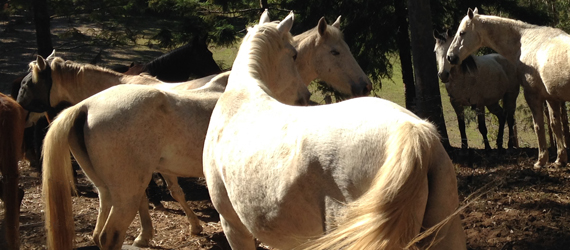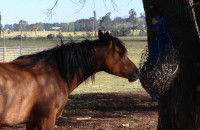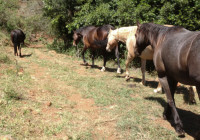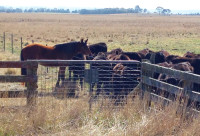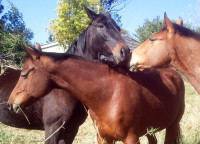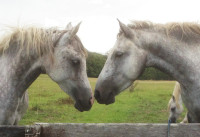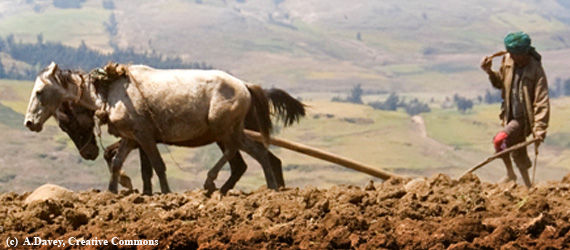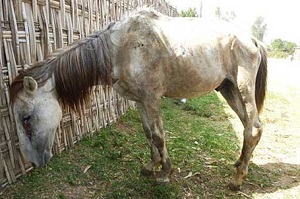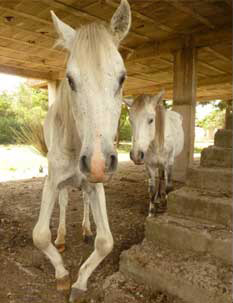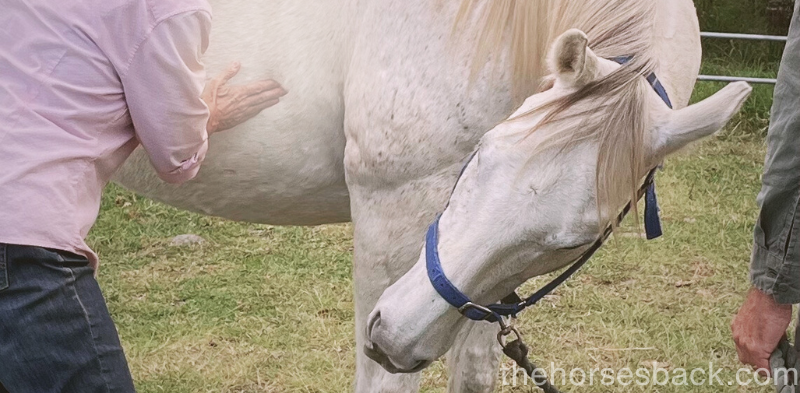

In an equine bodywork session, having a feel for the horse’s mental and emotional state is important.
It helps us to understand where they’re at, why they’re responding the way they do, and how we’re likely to be moving onwards in future sessions. We can then use this understanding to improve our connection and the holistic health outcomes.
Here are 10 of the common responses I see in horses I work with. For ease of communication, I’ve given them names.
It’s not science (and isn’t meant to be), but it is all about listening to the horse.
See any horse you recognise here? Enjoy 😉
(c) Jane Clothier, The Horse’s Back. No reproduction of text or images without permission.
1. The Enthusiast
This horse is the equine bodywork practitioner’s number one fan. If there were a t-shirt, they’d be wearing it.
They nicker at the sight of the therapist, and when led to the yard will often walk alongside their bodyworker instead of their owner. Someone’s made them feel good and THEY LIKE IT.
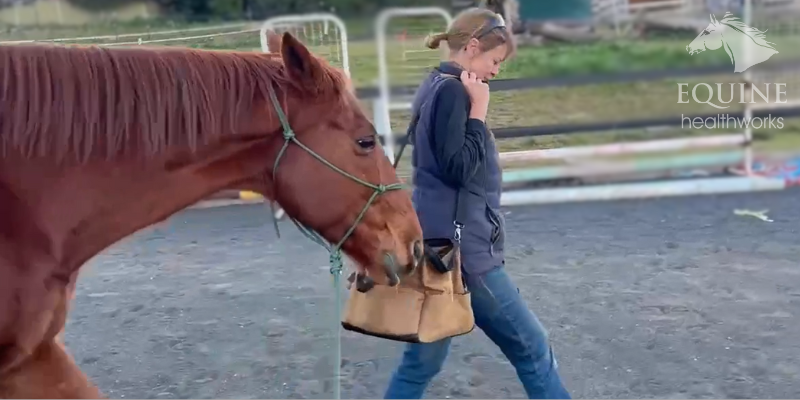
As a result, they exude huge warmth and give great cuddles and neck hugs.
And let’s just say they look bereft when ‘their’ therapist arrives and works on a different horse. They’ll probably stand nearby to tune into the energy of the session anyway.
2. The Child
This horse is often but not always young, projecting an air of total innocence.
And it’s genuine: they’re full of wonder for everything good that happens in their world.
And it’s safe to assume that up until now, it has all been good. As a result, they’re curious about everything that happens around them.
They’ve no defences set up and respond to the GOOD FEELS easily, sometimes apparently to their own surprise.
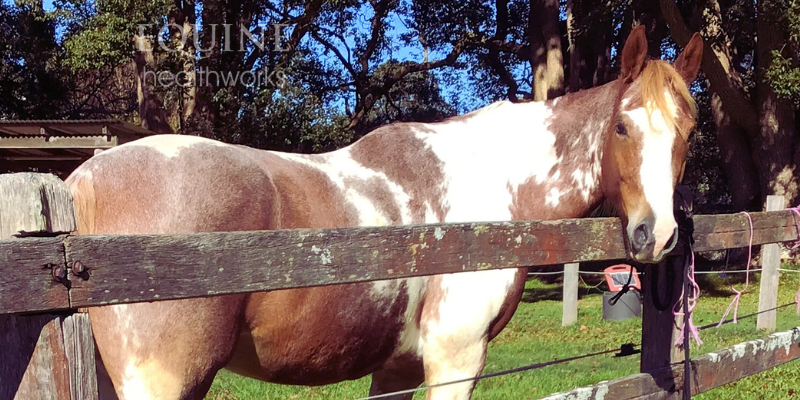
Their eyes will lock onto the therapist, the source of this remarkable experience.
Then they’ll turn their head from one side to the other, eyes following you as you move around the yard after the session.
‘Who are you? What did you do? Why am I feeling this?’
It’s impossible not to be enchanted by their bright, beautiful curiosity.
3. The Lightweight
This horse is a sensitive flower who has mixed feelings about this whole therapy business.
Their responses come super quickly, for good or for bad. Then they’ll take a huge amount from very little, and that goes both ways, for better or worse.
They can flinch at the unfamiliar nature of touch. If all’s well after that, they’ll often zone out at the first opportunity.

If you touch a spot with even a tiny problem, be prepared for flattened ears, a swinging head, tail swishing and a raised foot – sometimes all at once.
This horse is often a mare, affectionately known as ‘princess’ by her owner. But some geldings get complimentary membership too.
Once you get it right, don’t expect thanks, but do take heart watching the softness that unfolds before you.
Next time, you’ll be back to the beginning, but not quite, for now you’ll know very well that less is more.
4. The Superior Being
This trouper of a horse is a great competitor. They brush minor issues aside. They’ll often look down on you from a great height, as if at a mildly irritating fly. They don’t care to do anything as weak as going with the flow – yawning, licking and chewing is for losers.
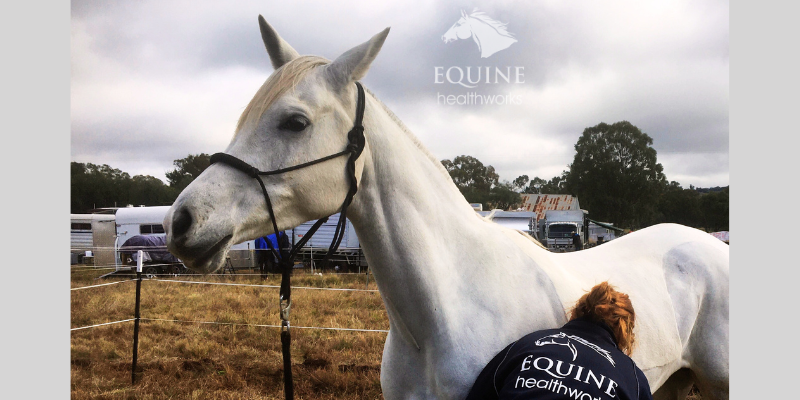
They occasionally forget themselves and the eyes start to close. It doesn’t last though: they’ll catch themselves and return to consciousness, with a ripple of irritation.
This doesn’t mean they’re not feeling it. They’ll remain tight-lipped until the pesky human is out of sight, then do all of their letting go in private.
Stallions and lead mares often march to this drum too.
5. The Survivor
This horse shows you very little at all.
They’ve often been through a previous episode of pain that lasted too long. Or, they may have become used to locking down a source of pain, as they still have a chronic issue today.
At the slightest recurrence of pain, they revert to the lock down posture or attitude they had before. It’s what got them through it last time – they’ve survived by gritting their teeth and ploughing on.
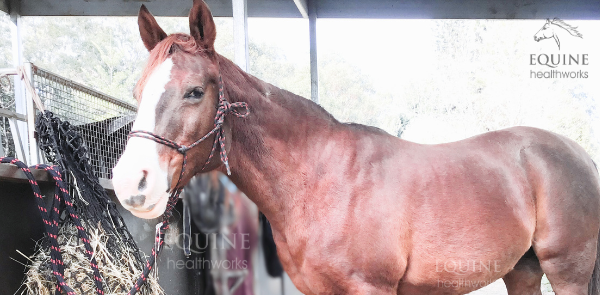
You can almost hear this horse ignoring you and your hands. When you first work with them, they don’t yield and go with the flow. Instead, they stand with firm lips and a fixed stare.
But unlike the Superior Being, their vibe isn’t a light one.
Any effects happen in their own time, when the halter is off. They may stand in a corner or seek the presence of their closest friend… You’ll only know how well it went on the next visit, when the horse suddenly starts to respond.
6. The Anxious
This is the horse that can’t switch off.
They stand with their head up, always on the lookout, with a giraffe like posture that’s not great for their body and especially not for their neck.
They don’t feel safe and their attention flits around. Their breathing is shallow and/or fast.
Some of them can’t let go. They’ve a nervous system in overdrive and its buzzing signals won’t allow the horse to relax.
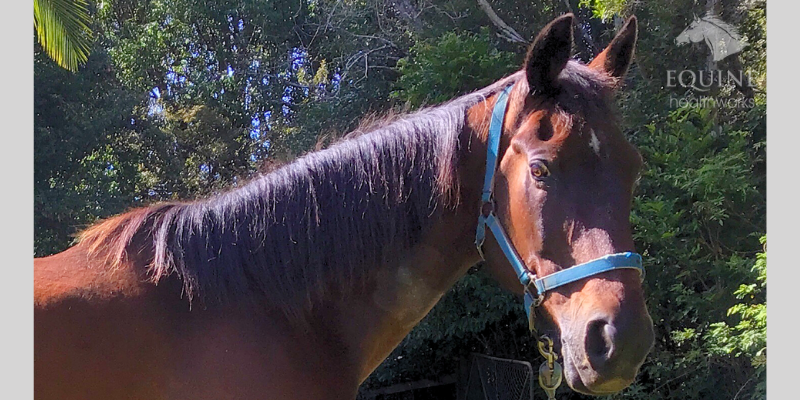
This is your challenge: to help this horse rediscover a deactivated state.
Pain may well be an issue, particularly in its shoulders and neck (and a headache). Nutrition and environment, too. Oh, and humans.
Initially settle for a horizontal neck, with a slightly closed eye being a bonus.
7. The Controller
This horse prefers not to let go, even if they show early signs of doing so. They step and move around frequently. Displacement activities include chewing the rope, rubbing their head on the handler, a fence, anything. They can be mouthy.
Although there’s no real hostility, there’s a constant ‘push back’ as you work – and you’ll be aware of it. Don’t expect to feel quickly accepted. Better get used to life outside their bubble – and their tough-guy efforts to keep you there, outside their safety zone.
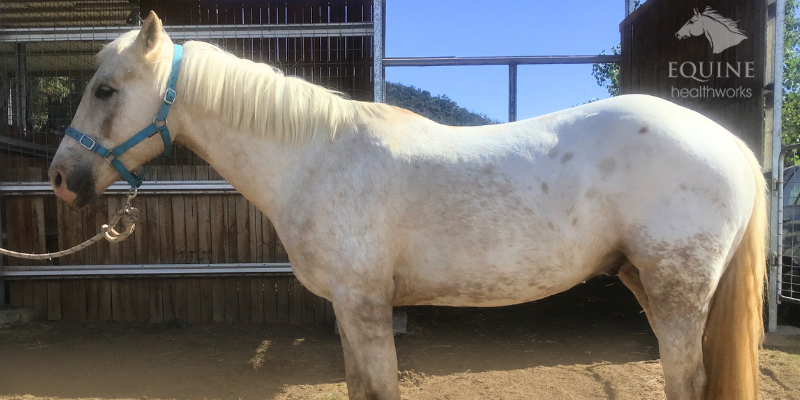
However, it can all change when you successfully relieve an issue that they never, ever expected to go. Suddenly you’re allowed in and find yourself looking into their huge, deep eyes.
This can be because they’ve been resolutely ignoring an uncomfortable body issue. If so, their fidgeting may have been because you were drawing their focus to exactly that.
8. The Watcher
This horse may stand in a quiet manner that’s initially encouraging. They may show early signs of relaxation, yet there’s still the feeling that they’re holding something back.
Then whoah! You’re met with a sudden tail swish, a swing of the hindquarters, or a snap of the teeth. You’ve touched a trauma spot and they’re telling you: ‘It’s right there! Watch yourself!’
The horse has some pain and you’ve just committed the cardinal sin of touching it.
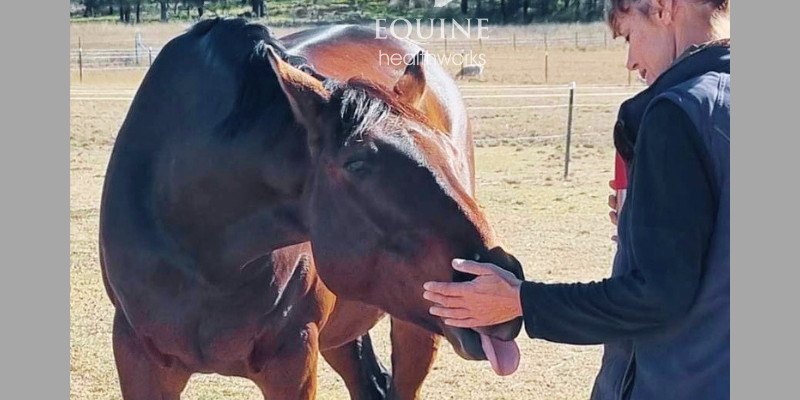
Some may be alert throughout the session as they wait for you to find that spot. Little do you know that you’re being subject to a test. Better tune up your psychic abilities…
No matter what you do, the horse holds on and won’t let go until that breakthrough moment when you find the problem that’s highest in their awareness.
The painful spot may be an old or newer issue, but one thing is sure: there’s a lot of emotion wrapped around it.
Stay safe.
9. The Over-Trained
This horse stands with resolute obedience, as they know they should. They’ve been taught to wait with statuesque stillness, no matter what happens around them.
Whatever happens, they’re just waiting until it’s over, doing their best not to get in the way. They’ve learned that if they do, there’ll be a reprimand or sometimes heavy correction.
Receiving bodywork, these horses are often in their new home, where more self-expression is allowed.
To the therapist, this horse feels mentally and emotionally absent from their own party.
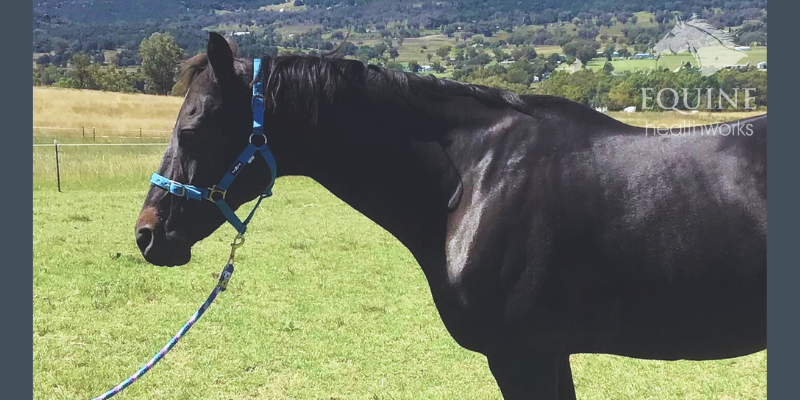
Watch out for this horse’s return to their body, as their responses may be elevated.
They may love you to pieces, or they may shout about a problem that’s been long overlooked. Finally permitted to say what they think, they’ve lost the volume control.
It’s up to you to find a way through this, along with their people.
10. The Depressed
This horse knows it’s not worth even trying to connect or respond, probably because last time they did, it got them nowhere.
Their vibe is a dull one, and their eye contact is minimal or non-existent. They’re not into engaging with you.
They may stare off into the middle distance, as if disocciating. There’s very little response until the relaxing sensations completely take over – then you may receive a single look, or a tentative touch on the hand.
It’s a start. That has to be enough for now.
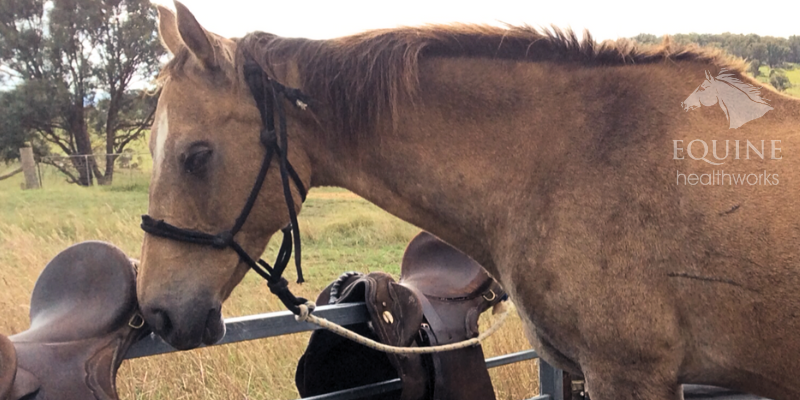
This horse will hopefully learn from the beneficial after-effects of the work. They will slowly start to feel that life can feel better and that humans have something to give.
With these horses, working with their mind and emotions is even more important. If they’ve had physical stresses forced on them in the past (and they usually have, leading to pain issues), the last thing we want to do is pressure them again.
Negotation is always the best way when we need to move forward, with lots of acceptance and thinking time.
Now I said there’d be ten, but there’s one more to come. I don’t meet too many of these extreme cases, and for that I’m grateful.
11. The Broken
This horse is so badly damaged that there seems to be no way back.
Very often, they’ve had multiple negatives in their lives, on multiple levels. Pain is a huge factor, with the horse having a condition that’s been ignored and frequently overridden (literally… it’s often back pain).
Some are both desperate and furious, having been forced beyond their limits. They can be highly dangerous to work with.
This horse has probably given enough for one lifetime – or had it taken from them.
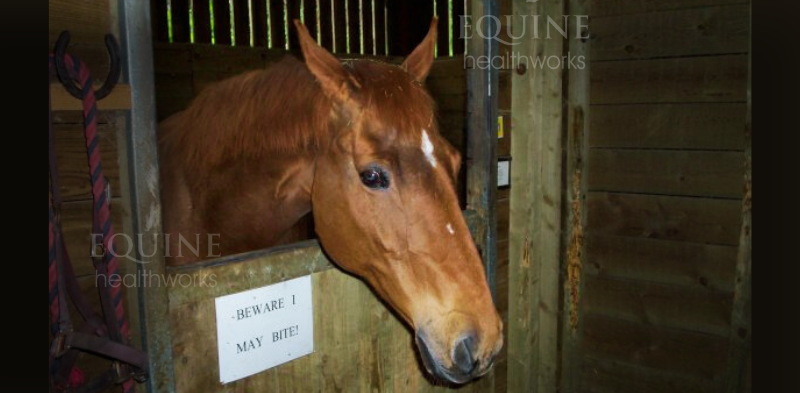
Bodywork is our fleeting gift as we try to help these horses feel better.
By helping to ease their stress, we may to a tiny extent counter the less positive experiences they’ve had at the hands of other humans.
In return, they take us into a silent place, with depths unknown. Go gently while you’re there.
